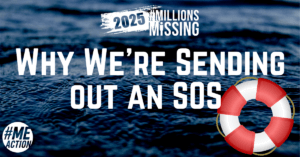The Tragic Neglect of Chronic Fatigue Syndrome
With a surprisingly broad-ranging and detail-rich article by Olga Khazan entitled “The Tragic Neglect of Chronic Fatigue Syndrome,” The Atlantic became the latest national publication to inform its readers about the severity of disease impact, dearth of medical understanding and treatment, lack of public awareness, and abysmally low research funding for ME.
Informed by patients Brian Vastag and Justin Reilly and Open Medicine Institute researchers David Kaufman and Ron Davis, Khazan delivers an unusually layered account of the intersection of patient experience, government neglect, and the ongoing search for definitive causation, biomarkers, and treatments. Confronted with a disease bearing enormous economic and human costs, for decades, public health institutions have refused to act. Khazan highlights the determined efforts of committed researchers to obtain private funding, and skillfully points out the need for public research funding commensurate with disease burden.
Each of the contributors reinforced the patients’ experience of the pervasive consequences of both physical and mental effort. A great strength of the article is its illumination of patients’ almost always hidden reality in which minor activity carries both a startlingly high cost in the moment and produces protracted debilitation, one where a simple task can relapse a sufferer, sometimes permanently, and in which for a surprising number of patients homeostasis is so fragile that even communication becomes challenging.
Woven among details about disease impact and trajectory are nuggets like the misappropriation of funding, the dismissal of biomedical origin, the uphill battle of crowdfunding for expensive, complex medical research, and the remarkable risk taking of desperately ill patients compelled to become advocates (between crashes).
The only place the article fails is the deliberate use of the medically near-meaningless “chronic fatigue” to identify the disease. The discussion of the use of “Chronic Fatigue Syndrome,” vs “Myalgic Encelphalomyelitis” vs “Systemic Exertion Intolerance Disease” hints at the cultural and medical power of the name, and at the drastic impact on patients of having a disease that invites dismissal. So it’s jarring when Khazan reverts to the lowest common denominator. She does disarm the old trope “yuppie flu” as an uneducated and inappropriate slur.
Despite the appellation issue, this excellent article is definitely worth reading and sharing.
Read the full article here.




